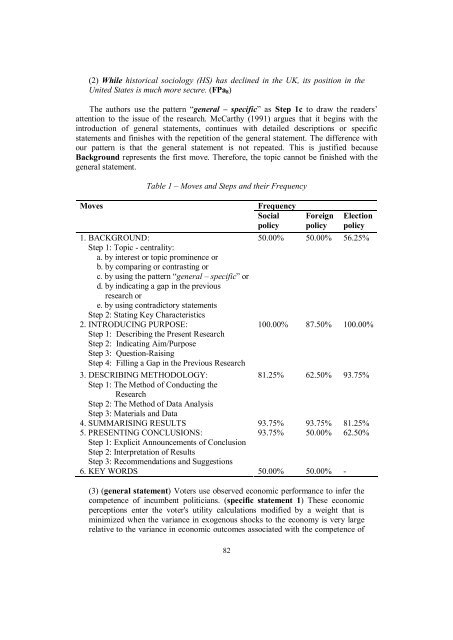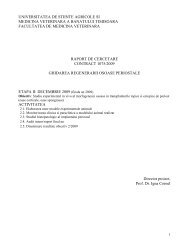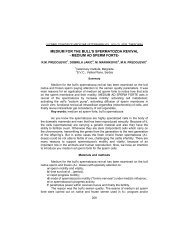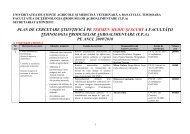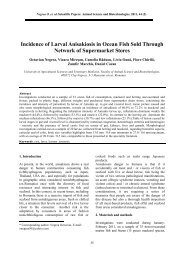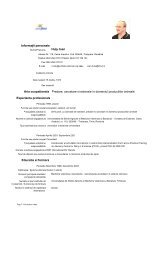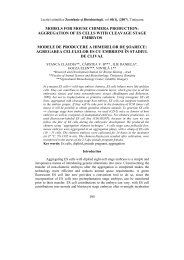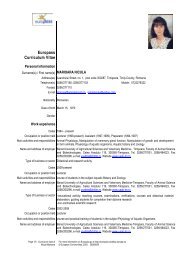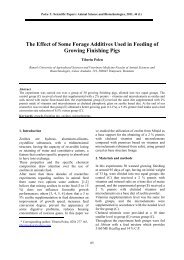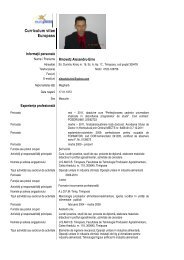journal of linguistic studies
journal of linguistic studies
journal of linguistic studies
You also want an ePaper? Increase the reach of your titles
YUMPU automatically turns print PDFs into web optimized ePapers that Google loves.
(2) While historical sociology (HS) has declined in the UK, its position in the<br />
United States is much more secure. (FPa8)<br />
The authors use the pattern “general – specific” as Step 1c to draw the readers’<br />
attention to the issue <strong>of</strong> the research. McCarthy (1991) argues that it begins with the<br />
introduction <strong>of</strong> general statements, continues with detailed descriptions or specific<br />
statements and finishes with the repetition <strong>of</strong> the general statement. The difference with<br />
our pattern is that the general statement is not repeated. This is justified because<br />
Background represents the first move. Therefore, the topic cannot be finished with the<br />
general statement.<br />
Moves<br />
Table 1 – Moves and Steps and their Frequency<br />
1. BACKGROUND:<br />
Step 1: Topic - centrality:<br />
a. by interest or topic prominence or<br />
b. by comparing or contrasting or<br />
c. by using the pattern “general – specific” or<br />
d. by indicating a gap in the previous<br />
research or<br />
e. by using contradictory statements<br />
Step 2: Stating Key Characteristics<br />
82<br />
Frequency<br />
Social<br />
policy<br />
Foreign<br />
policy<br />
Election<br />
policy<br />
50.00% 50.00% 56.25%<br />
2. INTRODUCING PURPOSE:<br />
Step 1: Describing the Present Research<br />
Step 2: Indicating Aim/Purpose<br />
Step 3: Question-Raising<br />
Step 4: Filling a Gap in the Previous Research<br />
100.00% 87.50% 100.00%<br />
3. DESCRIBING METHODOLOGY:<br />
Step 1: The Method <strong>of</strong> Conducting the<br />
Research<br />
Step 2: The Method <strong>of</strong> Data Analysis<br />
Step 3: Materials and Data<br />
81.25% 62.50% 93.75%<br />
4. SUMMARISING RESULTS 93.75% 93.75% 81.25%<br />
5. PRESENTING CONCLUSIONS:<br />
Step 1: Explicit Announcements <strong>of</strong> Conclusion<br />
Step 2: Interpretation <strong>of</strong> Results<br />
Step 3: Recommendations and Suggestions<br />
93.75% 50.00% 62.50%<br />
6. KEY WORDS 50.00% 50.00% -<br />
(3) (general statement) Voters use observed economic performance to infer the<br />
competence <strong>of</strong> incumbent politicians. (specific statement 1) These economic<br />
perceptions enter the voter's utility calculations modified by a weight that is<br />
minimized when the variance in exogenous shocks to the economy is very large<br />
relative to the variance in economic outcomes associated with the competence <strong>of</strong>


